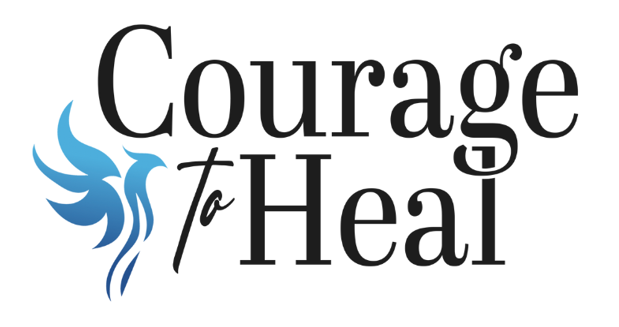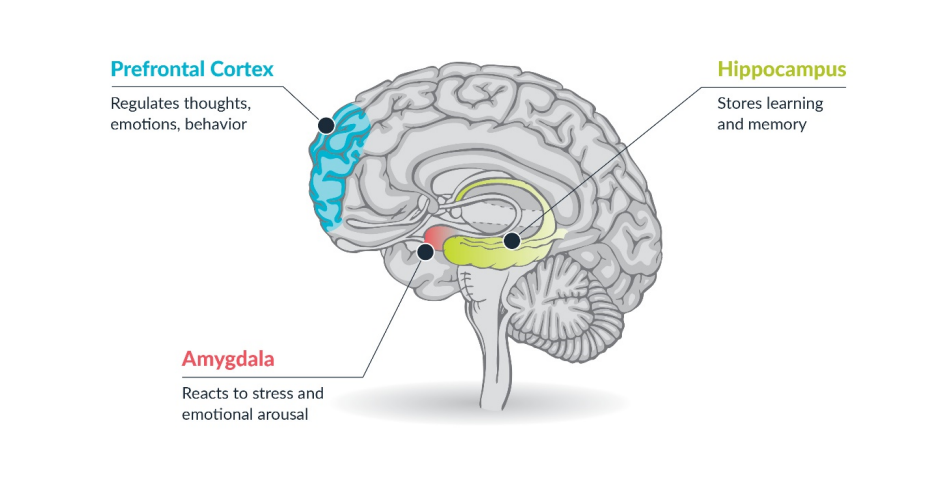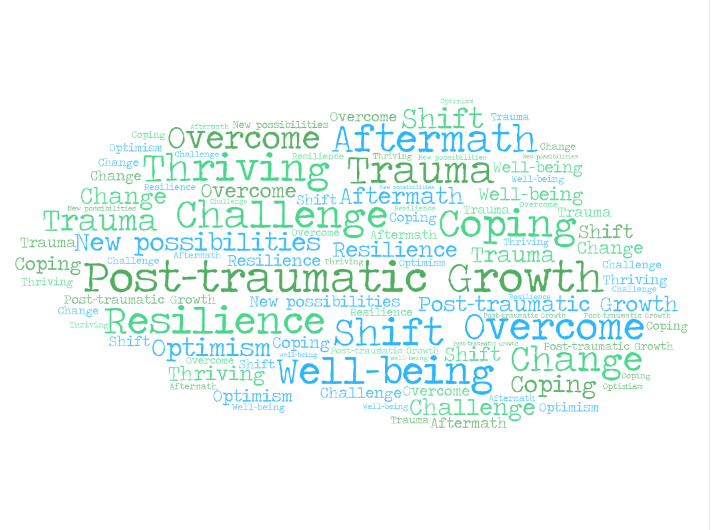Trauma and PTSD: What You Need To Know.
You may know you have experienced something traumatic, but what you don’t know is why other people who experienced the same or similar events are OK – and you are not. It may have been months or even years since the event, yet the pain is still there. The memory has a hold over you, like an evil spell. The symptoms can certainly make you doubt your own sanity as the world goes on around you. So, what does the future hold for you?
What Is Trauma?
Trauma does not refer to the traumatic event itself; it is the resulting psychological impact of that event. This impact must be negative and enduring for the person to be considered traumatized. Trauma can be thought of as a psychic or an emotional injury.
Many events that can be traumatic to a person. Usually, a traumatic event makes the person fear for their life in some way, but this is not a requirement. For example, childhood emotional neglect does not necessarily make the child feel like they are going to die, but it denies them enough emotionally responsive parenting that it can cause sometimes long-lasting trauma.
There are multiple categories of trauma, some of them overlapping: acute, chronic, complex, developmental, vicarious, racialized, historical, and intergenerational. Trauma can also be divided into “big T” traumas and “little t” traumas. “Big T” traumas refer to obvious, overwhelming, extremely stressful events where the affected person feared for their life or bodily integrity. Surviving a devastating tornado would fall into this category. “Little t” traumas are seen as having less impact that can nevertheless be long-lasting, like school bullying.
Any kind of assault, such as rape or a mugging; a serious accident, like a car crash or a near-drowning; hate crimes; natural disasters, domestic violence, severe illness or injury, the death of a loved one, divorce, and witnessing a death or violence are all common causes of trauma. Trauma can also be caused by childhood abuse and neglect, whether it’s physical, sexual, or emotional. Less obvious events, like infidelity can be traumatic, too.
What Is PTSD?
PTSD or posttraumatic stress disorder is a serious psychological condition that can result from experiencing a traumatic event. Not everyone who experiences trauma will develop PTSD – up to 20% of people will. PTSD causes devastating symptoms that can really decrease the quality of life. Women are twice as likely to get PTSD as men, and PTSD is more common in Black, Latino, and Native American persons as well as those who identify as LGBTQIA+.
Symptoms of PTSD fall into 4 categories: intrusion, avoidance, changes in thoughts and mood, and changes in reactivity. For someone to be diagnosed with PTSD, all of these symptoms must go on for at least one month. They must also be distressing enough as to cause disturbances in the person’s daily functioning. Therefore, a traumatized person can still have them, but not qualify for a PTSD diagnosis.
Intrusion
This category includes memories, thoughts, images, sounds, smells, and dreams associated with the traumatic event that constantly keep popping into the traumatized person’s head, uninvited. Remembering these elements brings the person back to the horrible incident, which is referred to as a “flashback.” Suddenly, the traumatized person is transported back into the past, with their mind and body reacting as if the event was unfolding in real time: terrified, sweating, panting, and panicked. They must bring themselves back into the present before they can recover from the episode.
Avoidance
Traumatized people will often try their best to avoid any reminders of their terrible experience. They could avoid hanging out with certain people, going to certain places, engaging in certain activities or using objects that remind them of the event. Traumatized people can also try to avoid the intrusive thoughts and memories mentioned above, although they are usually not successful. Even simple eye contact can be difficult with PTSD. Predictably, these symptoms lead to social isolation and shutting down psychologically.
Changes in Thoughts and Mood
PTSD will also lead to a host of negative moods, like guilt, shame, depression, and fear. Feeling at fault and out of control or thinking that no one can be trusted are examples of negative thoughts that can result from being traumatized. “If only I left 5 minutes early, the accident would not have happened,” you might think. “If I fought harder, he would have left me alone,” “My parents wouldn’t abuse me if I wasn’t bad,” and “She would still be alive if I was nicer to her” are all examples of common thoughts that come with PTSD.
Changes In Reactivity
Reactivity refers to symptoms like always being on alert, irritability, anger, self-destructive behavior, and having trouble concentrating or sleeping. Traumatized people are often easily startled, quick to react to potential danger, have emotional outbursts or engage in reckless behaviors like speeding and excessive substance use. The latter is especially common among survivors of PTSD, which is understandable because mind-altering substances help with avoidance of intrusive thoughts.
How PTSD Affects the Brain
Trauma can have a profound effect on multiple regions in the brain, which is what ultimately leads to they symptoms experienced by survivors. MRI studies show that trauma tends to activate the right side of the brain while deactivating the left side. As you may know, the right side of the brain regulates more intuitive and emotional behaviors while the left side is responsible for reason and logic. This is one reason why trauma symptoms cannot simply be controlled with will and concentration.
There are 3 structures in the brain that are mainly affected by traumatic events. They are the prefrontal cortex, the amygdala, and the hippocampus:
The amygdala can be thought of as an alarm system – it causes a danger signal that activates your fight-or-flight responses. In people with PTSD, the amygdala is over-activated and responds dramatically to innocent stimuli, like fireworks or the sight of brake lights.
The prefrontal cortex is your brain’s braking system. It is able to receive and analyze the signals coming from the amygdala so that you can respond calmly and rationally. Traumatized people have an under-active prefrontal cortex, which means it is not as effective at getting these signals and reacting to them appropriately.
The hippocampus is the memory center of the brain. You can think of it as someone taking notes, date-stamping them, and filing them in the right cabinet. With trauma, the hippocampus may write down the memories incorrectly, fail to stamp them with the right date, or file them in the wrong cabinet. This leads to memory loss as well as the feeling that the traumatic memory is actually occurring in the present moment.
Why Me?
As mentioned, not everyone will develop PTSD after experiencing or witnessing a traumatic event. The main reason for this is individual differences in genetics, brain structure, psychological makeup, personality, upbringing, etc. There isn’t one particular trait that can decide whether you get PTSD. Usually, multiple traumatic events that happen overtime, especially in childhood, can be more likely to cause PTSD.
One thing is for sure – having PTSD does not mean you are somehow “weak” or “defective.” It is a very human response to a horrible, tragic event that got you “hooked.” You should also know that most people develop some of these symptoms immediately after being traumatized. It just so happens that for them the symptoms got milder and disappeared over time. It is not your fault that this did not happen for you.
Can PTSD Be Passed Down?
It is now a scientific fact – psychological trauma can be passed down to future generations through chemical changes in DNA. Studies found that children of traumatized people can have higher rates of depression and anxiety and be more likely to die by suicide. This effect was seen in children of Holocaust survivors and Vietnam war veterans.
In additional to biological changes, trauma often causes behavioral changes in parents, further increasing their children’s chances of inheriting these unhelpful traits. For example, a well-meaning parent with PTSD may not spend much time with their child because of avoidance, inadvertently causing them to grow up in isolation and emotional neglect.
PTSD and Relationships
There is no question that PTSD has a deeply negative effect on the survivor’s social interactions. Intrusion and reactivity symptoms may make the person feel weird in social situations as their reactions are misunderstood by others. Avoidance, of course, leads to not being social altogether. The more the traumatized person avoids their loved ones, the less welcome they feel.
Negative thoughts and mood follow avoidance, further pushing the traumatized person into isolation. This is especially dangerous because PTSD symptoms are worsened without social support. Family ties, romantic relationships, and friendships can all be negatively affected by this diagnosis.
Can PTSD Be Cured?
If treated properly, PTSD can go away completely, leaving the survivor to live their life free from symptoms. There are many types of therapies available for PTSD, like EMDR therapy, cognitive processing therapy, trauma-focused cognitive behavioral therapy, somatic experiencing, internal family systems therapy, and others. Not every therapy will work for every person, but if the therapy is a good fit, there is a high chance that the person will no longer qualify for the PTSD diagnosis after treatment.
Do I Need a PTSD Diagnosis to Get Treatment?
Whether or not you need a diagnosis depends on your insurance situation. Insurance companies and government healthcare programs generally require a diagnosis before they will reimburse your therapist or doctor for treatment. Your provider could diagnose you with something like adjustment disorder in the beginning, simply to be able to provide care for you before they can really explore your symptoms.
You could also be diagnosed with depression, bipolar disorder, anxiety, ADHD, OCD, substance use disorder, and other conditions, all of which are common along with PTSD. Sometimes, PTSD can masquerade as one of these disorders, with avoidance symptoms imitating anxiety or OCD and negative mood mimicking depression. If you are paying out of pocket, you don’t need a diagnosis to receive treatment for trauma.
What Kind of PTSD Treatment is Best?
Ultimately, there is no way of knowing which therapy will work best for your unique situation. There is no one-size-fits-all treatment for PTSD, but there are some widely accepted methods that tend to work for most people:
Eye Movement Desensitization Reprocessing (EMDR) and similar techniques, like advanced resolution therapy (ART) involve the traumatized person accessing the painful memories through visual images, emotional states, and/or body sensations while the brain is being stimulated in some way so it can finish digesting the memory. EMDR can uses multiple types of stimulation, which always alternates between right and left side of the body: eye movements, vibrating hand-held devices, audio tones, and tapping.
Cognitive Processing Therapy (CPT) involves recalling and discussing traumatic memories with the therapist, who will point out irrational and unhelpful thoughts. CPT also requires the survivor to write extensively about the trauma, putting their feelings in words. This helps verbally process the trauma, which is stored in the non-verbal parts of the brain. This therapy can be initially activating because of the need to describe the trauma.
Prolonged Exposure Therapy (PET) confronts avoidance head on and asks the survivor to think about the traumatic event directly after learning calming techniques. The therapist guides the traumatized person through recollecting the painful memories one by one and even makes a recording of this retelling, listening to which is the person’s homework. Again, this method can be a bit activating as the survivor has to face the event in their mind.
There are many other types of therapy to treat PTSD, and they should be explored before committing to one method. It is always a good idea to ask a potential therapist what approach they use and how they go about making sure that you do not feel overwhelmed and terrified. It is important to finish treatment once you start so that the traumatic memories can be fully processed.
***
We offer trauma therapy with EMDR both in-person and online - please reach out for details.






